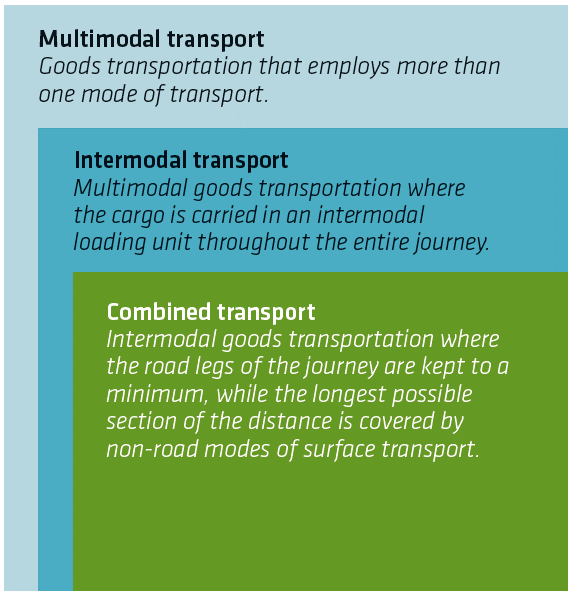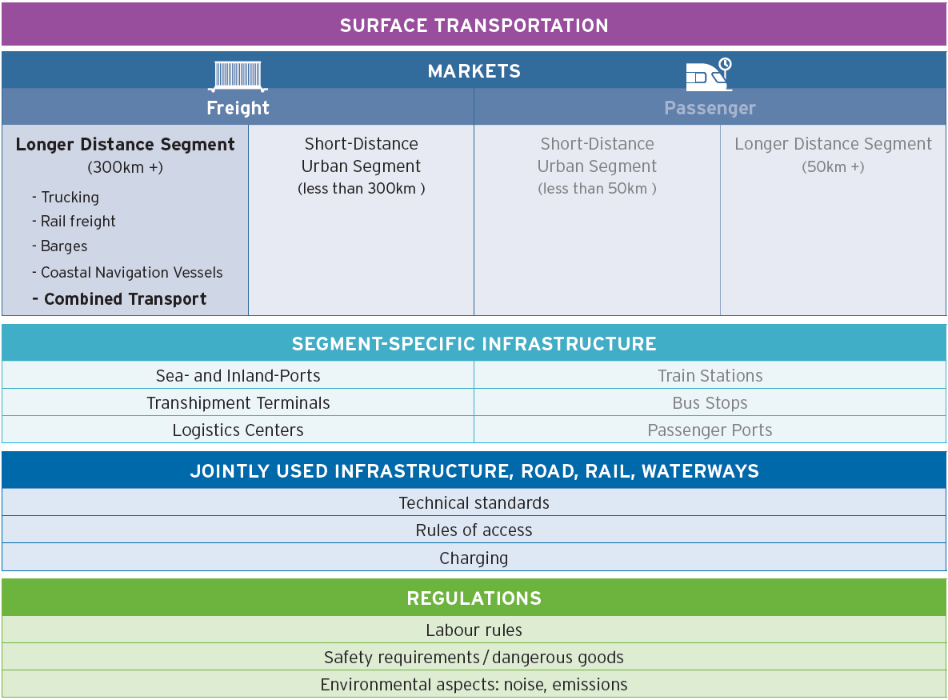Definitions and positioning
Intermodal transport is a subset of Multimodal transport differentiated by the use of an intermodal loading unit, which contains the cargo from origin to destination. This enables a quick and efficient transshipment between the collaborating modes of transport.
Combined Transport is an intermodal transport operation where the non-road legs – typically performed by electric rail freight or waterborne means – are maximised in order to achieve superior energy efficiency, while minimising the external costs when compared to road-only transport end-to-end by trucks. Combined Transport also enables maximum decoupling from the use of imported fossil fuels.
Intermodal and Combined Transport compete in the long-distance surface freight transport market (over 300km) in Europe.
 |  |
Intermodal transshipment techniques
Vertical: transshipment carried out by mobile or rail-based cranes and/or reachstackers, whereby the intermodal loading units is lifted by attaching to its top locks, or using grapple arms for a reach to its bottom. The vertical transshipment technique is suited to transfer every type of intermodal loading unit. Specialised technique to assist with the vertical transshipment of non-craneable trailers: NIKRASA
Horizontal: intermodal transshipment techniques uniquely available to trailers or full trucks. Most prominently Rolling Motorways (RoLa) and the Channel Tunnel Shuttle, where full trucks roll onto a train consisting of special, very low wagons.
Three other horizontal transshipment techniques were in use in 2022 for the unaccompanied transport of trailers: Lohr/Modalohr, CargoBeamer and HELROM.
Objectively speaking, 45-foot high cube containers and swap bodies allow for the maximum ultilisation of the rail infrastructure by enabling the best net cargo (number of truckloads) to gross train weight ratio. The vertical transhipment of containers is the only that has been fully automatised.


